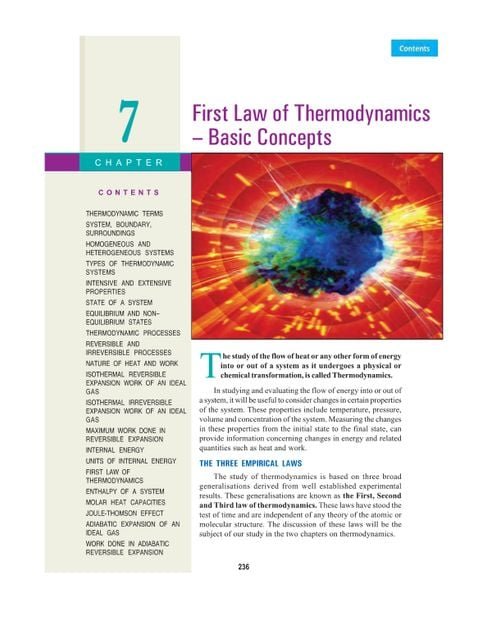Suggest an improvement
/* “function”==typeof InitializeEditor,callIfLoaded:function(o),initializeOnLoaded:function(o)(document.addEventListener(“gform_main_scripts_loaded”,()=>gform.scriptsLoaded=!0,gform.callIfLoaded(o)),document.addEventListener(“gform/theme/scripts_loaded”,()=>gform.themeScriptsLoaded=!0,gform.callIfLoaded(o)),window.addEventListener(“DOMContentLoaded”,()=>gform.domLoaded=!0,gform.callIfLoaded(o))),hooks:action:,filter:,addAction:function(o,r,e,t)gform.addHook(“action”,o,r,e,t),addFilter:function(o,r,e,t)gform.addHook(“filter”,o,r,e,t),doAction:function(o)gform.doHook(“action”,o,arguments),applyFilters:function(o)return gform.doHook(“filter”,o,arguments),removeAction:function(o,r)gform.removeHook(“action”,o,r),removeFilter:function(o,r,e)gform.removeHook(“filter”,o,r,e),addHook:function(o,r,e,t,n)null==gform.hooks[o][r]&&(gform.hooks[o][r]=[]);var d=gform.hooks[o][r];null==n&&(n=r+”_”+d.length),gform.hooks[o][r].push(tag:n,callable:e,priority:t=null==t?10:t),doHook:function(r,o,e)var t;if(e=Array.prototype.slice.call(e,1),null!=gform.hooks[r][o]&&((o=gform.hooks[r][o]).sort(function(o,r)return o.priority-r.priority),o.forEach(function(o)”function”!=typeof(t=o.callable)&&(t=window[t]),”action”==r?t.apply(null,e):e[0]=t.apply(null,e))),”filter”==r)return e[0],removeHook:function(o,r,t,n)var e;null!=gform.hooks[o][r]&&(e=(e=gform.hooks[o][r]).filter(function(o,r,e)),gform.hooks[o][r]=e)});
/* ]]> */

-
N/AFix spelling/grammar issueAdd or fix a linkAdd or fix an imageAdd more detailImprove the quality of the writingFix a factual error
-
You don’t need to tell us which article this feedback relates to, as we automatically capture that information for you.
-
This allows us to get in touch for more details if required.
-
Enter a five letter word in lowercase
#gform_wrapper_38 .gform_footer visibility: hidden; position: absolute; left: -100vw;
-
This field is for validation purposes and should be left unchanged.
/* = 0;if(!is_postback)return;var form_content = jQuery(this).contents().find(‘#gform_wrapper_38’);var is_confirmation = jQuery(this).contents().find(‘#gform_confirmation_wrapper_38’).length > 0;var is_redirect = contents.indexOf(‘gformRedirect(){‘) >= 0;var is_form = form_content.length > 0 && ! is_redirect && ! is_confirmation;var mt = parseInt(jQuery(‘html’).css(‘margin-top’), 10) + parseInt(jQuery(‘body’).css(‘margin-top’), 10) + 100;if(is_form)jQuery(‘#gform_wrapper_38’).html(form_content.html());if(form_content.hasClass(‘gform_validation_error’))jQuery(‘#gform_wrapper_38’).addClass(‘gform_validation_error’); else jQuery(‘#gform_wrapper_38’).removeClass(‘gform_validation_error’);setTimeout( function() /* delay the scroll by 50 milliseconds to fix a bug in chrome */ jQuery(document).scrollTop(jQuery(‘#gform_wrapper_38’).offset().top – mt); , 50 );if(window[‘gformInitDatepicker’]) gformInitDatepicker();if(window[‘gformInitPriceFields’]) gformInitPriceFields();var current_page = jQuery(‘#gform_source_page_number_38’).val();gformInitSpinner( 38, ‘https://geekymedics.com/wp-content/plugins/gravityforms/images/spinner.svg’, true );jQuery(document).trigger(‘gform_page_loaded’, [38, current_page]);window[‘gf_submitting_38’] = false;else if(!is_redirect)var confirmation_content = jQuery(this).contents().find(‘.GF_AJAX_POSTBACK’).html();if(!confirmation_content)confirmation_content = contents;jQuery(‘#gform_wrapper_38’).replaceWith(confirmation_content);jQuery(document).scrollTop(jQuery(‘#gf_38’).offset().top – mt);jQuery(document).trigger(‘gform_confirmation_loaded’, [38]);window[‘gf_submitting_38’] = false;wp.a11y.speak(jQuery(‘#gform_confirmation_message_38’).text());elsejQuery(‘#gform_38’).append(contents);if(window[‘gformRedirect’]) gformRedirect();jQuery(document).trigger(“gform_pre_post_render”, [ formId: “38”, currentPage: “current_page”, abort: function() this.preventDefault(); ]); if (event && event.defaultPrevented) return; const gformWrapperDiv = document.getElementById( “gform_wrapper_38” ); if ( gformWrapperDiv ) const visibilitySpan = document.createElement( “span” ); visibilitySpan.id = “gform_visibility_test_38”; gformWrapperDiv.insertAdjacentElement( “afterend”, visibilitySpan ); const visibilityTestDiv = document.getElementById( “gform_visibility_test_38” ); let postRenderFired = false; function triggerPostRender() if ( postRenderFired ) return; postRenderFired = true; gform.core.triggerPostRenderEvents( 38, current_page ); if ( visibilityTestDiv ) visibilityTestDiv.parentNode.removeChild( visibilityTestDiv ); function debounce( func, wait, immediate ) var timeout; return function() var context = this, args = arguments; var later = function() timeout = null; if ( !immediate ) func.apply( context, args ); ; var callNow = immediate && !timeout; clearTimeout( timeout ); timeout = setTimeout( later, wait ); if ( callNow ) func.apply( context, args ); ; const debouncedTriggerPostRender = debounce( function() triggerPostRender(); , 200 ); if ( visibilityTestDiv && visibilityTestDiv.offsetParent === null ) const observer = new MutationObserver( ( mutations ) => mutations.forEach( ( mutation ) => if ( mutation.type === ‘attributes’ && visibilityTestDiv.offsetParent !== null ) debouncedTriggerPostRender(); observer.disconnect(); ); ); observer.observe( document.body, attributes: true, childList: false, subtree: true, attributeFilter: [ ‘style’, ‘class’ ], ); else triggerPostRender(); } );} );
/* ]]> */

Introduction
Primary aldosteronism, also known as Conn’s syndrome, is the most common endocrinological cause of secondary hypertension.1 It is the autonomous production of aldosterone by the adrenal cortex, resulting in hypertension and occasionally hypokalaemia.1-3 Either one or both of the adrenal glands may be implicated in hypersecretion, and there are rarer genetic and ectopic causes.1, 3
Primary aldosteronism has an estimated prevalence of 10% amongst the general hypertensive population, and a prevalence of more than 20% amongst the resistant hypertensive population.1-2
It is important to identify primary aldosteronism as it is a potentially curable cause of hypertension, associated with increased morbidity and mortality compared to essential hypertension, even at similar blood pressure levels.2-3
Aetiology
Hypersecretion of aldosterone by the adrenal glands may be classified as unilateral, bilateral, genetic or ectopic.1, 3-4
Bilateral idiopathic hyperplasia is the most common (60%), followed by unilateral aldosterone-producing adenomas (35%).4
Pathophysiology
Aldosterone is a steroid hormone produced by the adrenal gland, specifically by the cells of the zona glomerulosa in the adrenal cortex.5 Its production is regulated by the renin-angiotensin-aldosterone system (RAAS).5
Renin is an enzyme released by the kidneys in response to:
- Low circulating blood volume
- Reduced delivery of sodium to the macula densa cells of the distal convoluted tubule of the kidneys5
Renin converts angiotensinogen, a protein produced by the liver, to angiotensin I. Angiotensin I is then converted to the more potent hormone, angiotensin II, by the angiotensin-converting enzyme (ACE), which is primarily found in the pulmonary capillaries.5
Angiotensin II is a powerful vasoconstrictor, which increases blood pressure; it also stimulates the release of aldosterone.5
Aldosterone binds to mineralocorticoid receptors in the kidneys, specifically at the principal epithelial cells of the collecting ducts.5 This increases sodium reabsorption from the urine into the bloodstream via epithelial sodium channels (ENaC) on the apical membrane.5 Aldosterone also activates Na-K ATPase at the basolateral membrane. Sodium ions enter the bloodstream in exchange for potassium ions, which are taken into the cells and then excreted into the urine.5
Aldosterone’s net effect is:
- Increased sodium reabsorption, which promotes fluid retention
- Increased potassium excretion, resulting in hypokalaemia5
Aldosterone also promotes thirst and increased salt appetite through its effect on mineralocorticoid receptors in the brain.5


Clinical features
History
Primary aldosteronism is usually asymptomatic.
If hypokalaemia is present, symptoms may include muscle weakness, fatigue, palpitations and cramps.6
Hypertension rarely presents with symptoms, but can result in headache and blurred vision in some cases.7
Primary aldosteronism may uncommonly cause polydipsia and polyuria through arginine vasopressin resistance (AVP-R), previously known as nephrogenic diabetes insipidus.6 This is due to hypokalaemia impacting the kidneys’ ability to concentrate urine through the action of vasopressin (antidiuretic hormone).6
Clinical examination
Clinical examination should focus on a thorough assessment of end-organ complications of hypertension.3, 6
Typical clinical findings of primary aldosteronism include:
- Hypertension
- Hypertensive retinopathy on fundoscopy
- Displaced and/or forceful apex beat, suggesting hypertensive cardiomyopathy
Differential diagnosis
Differential diagnoses to consider in suspected primary aldosteronism include:
- Essential hypertension
- Cushing’s syndrome
- Phaeochromocytoma
- Renal artery stenosis
- Renovascular hypertension
- Congenital adrenal hyperplasia
- Excessive liquorice ingestion
- Liddel syndrome
- Bartter syndrome
- Gitelman syndrome7
Investigations
Bedside investigations
Relevant bedside investigations include:
- Basic observations: to detect hypertension
- ECG: detect evidence of end-stage complications of hypertension, e.g. left ventricular hypertrophy
- Urinalysis: proteinuria may suggest end-organ dysfunction due to uncontrolled hypertension
Laboratory investigations
Relevant laboratory investigations include:
- Urea and electrolytes: may show hypokalaemia
- Serum aldosterone-renin ratio (ARR): elevated ARR (high aldosterone and low renin) suggests primary aldosteronism
- Genetic testing: considered in those <20 years old at diagnosis, a family history of primary aldosteronism, early-onset hypertension or early-onset cerebrovascular accident3
Imaging
Relevant imaging includes:
- Adrenal CT: to exclude adrenocortical carcinoma and detect adenoma
Adrenal incidentalomas
Adrenal incidentalomas are common, impacting 2% of the general population and 7% of those 70 years and older. Only 10% are functional, and 2% may be adrenocortical carcinomas.8
Therefore, an adrenal adenoma is not always the cause of primary aldosteronism. To confirm whether an adrenal adenoma is functional, adrenal venous sampling can distinguish between unilateral and bilateral hypersecretion.
Special tests
Seated saline suppression test
A seated saline suppression test is a confirmatory test to diagnose primary aldosteronism.3 This requires baseline biochemistry and serum aldosterone and renin levels, before administering a saline infusion and re-testing.
A normal response is for aldosterone levels to decrease, due to inhibition of the RAAS. In primary aldosteronism, aldosterone levels remain elevated.
Adrenal venous sampling
Adrenal venous sampling is the gold standard for determining whether primary aldosteronism is due to unilateral or bilateral hypersecretion from the adrenal glands, which is crucial for guiding management.3
The involves sampling both adrenal veins and a peripheral vein to measure aldosterone levels and comparing these as a ratio. A higher ratio is more suggestive of unilateral aldosterone production, with a lower ratio more suggestive of bilateral aldosterone production.
Risks of the procedure include bleeding, venous rupture, venous thrombosis, contrast allergy and/or extravasation, damage to surrounding structures (rupture of the adrenal gland), and an inconclusive result.9
Screening
Screening is usually recommended for those with hypertension that is resistant or requiring ≥4 antihypertensive drugs to control, or those with hypertension plus one of: adrenal incidentaloma, hypokalaemia, sleep apnoea, or a family history.3
Screening is performed by measuring serum aldosterone and renin, and calculating the ARR. A raised ARR is suggestive but not confirmatory of primary aldosteronism.3
Many drugs and clinical factors can impact the accuracy of testing serum aldosterone and renin levels, and this should be considered when interpreting the ARR.
Management
Medical management
Medical management is the mainstay for those with bilateral primary aldosteronism or those for whom surgery is contraindicated.3
Medications include spironolactone and eplerenone, which are mineralocorticoid receptor antagonists that block aldosterone from binding to its receptor.3
Surgical management
Surgical management is usually curative in those with unilateral primary aldosteronism.3 This involves surgical resection of the adrenal gland (adrenalectomy).
Complications
Complications of primary aldosteronism can include:
- Increased cardiovascular mortality
- Atrial fibrillation
- Left ventricular hypertrophy
- Myocardial infarction
- Stroke
- Myocardial fibrosis6
Reviewer
Consultant Endocrinologist
Editor
Dr Jamie Scriven
References
- Hudson Institute of Medical Research. Endocrine Hypertension. 2024. Available from: [LINK].
- Turcu AF, Nhan W, Grigoryan S, et al. Primary Aldosteronism Screening Rates Differ with Sex, Race, and Comorbidities. Journal of the American Heart Association. 2022. Available from: [LINK].
- Funder JW, Carey RM, Mantero F, et al. The Management of Primary Aldosteronism: Case Detection, Diagnosis, and Treatment: An Endocrine Society Clinical Practice Guideline. The Journal of Clinical Endocrinology & Metabolism. 2016. Available from: [LINK].
- Fagugli RM, Taglioni C. Changes in the perceived epidemiology of primary hyperaldosteronism. International Journal of Hypertension. 2011. Available from: [LINK].
- Fountain, JH, Kaur J, Lappin SL. Physiology, Renin Angiotensin System. StatPearls. 2023. Available from: [LINK].
- Dominguez A, Muppidi V, Leslie SW, et al. Hyperaldosteronism. StatPearls. 2024. Available from: [LINK].
- Marquez RRC. Primary Aldosteronism Differential Diagnoses. Medscape. 2024. Available from: [LINK].
- Sherlock M, Scarsbrook A, Abbas A, et al. Adrenal Incidentaloma. Endocrine Reviews. 2020. Available from: [LINK].
- Yang J, Bell DA, Carroll R, et al. Adrenal Vein Sampling for Primary Aldosteronism: Recommendations From the Australian and New Zealand Working Group. Clinical Endocrinology. 2024. Available from: [LINK].
Image references
- Figure 1. OpenStax College. Renin Angiotensin System. License: [CC BY 3.0].
Discover more from Bibliobazar Digi Books
Subscribe to get the latest posts sent to your email.




